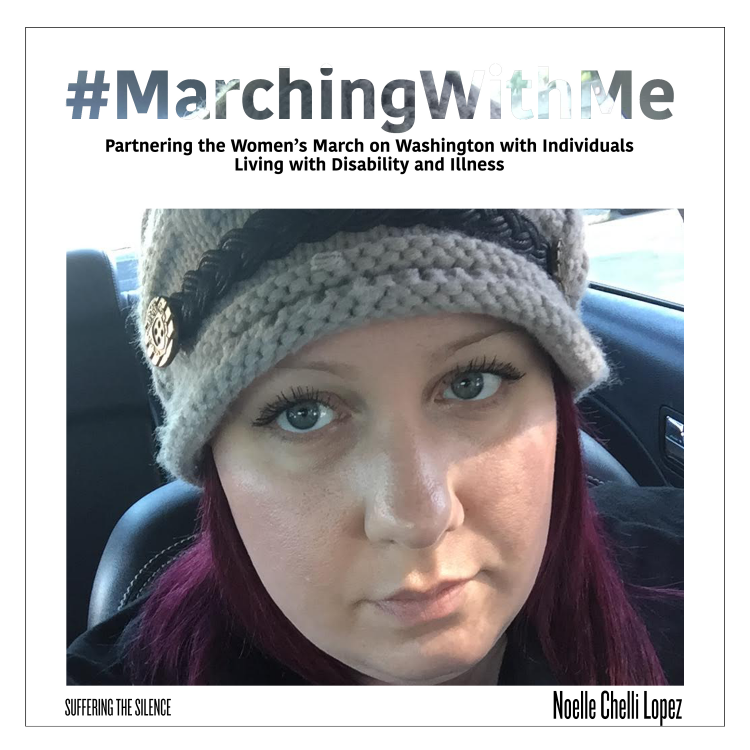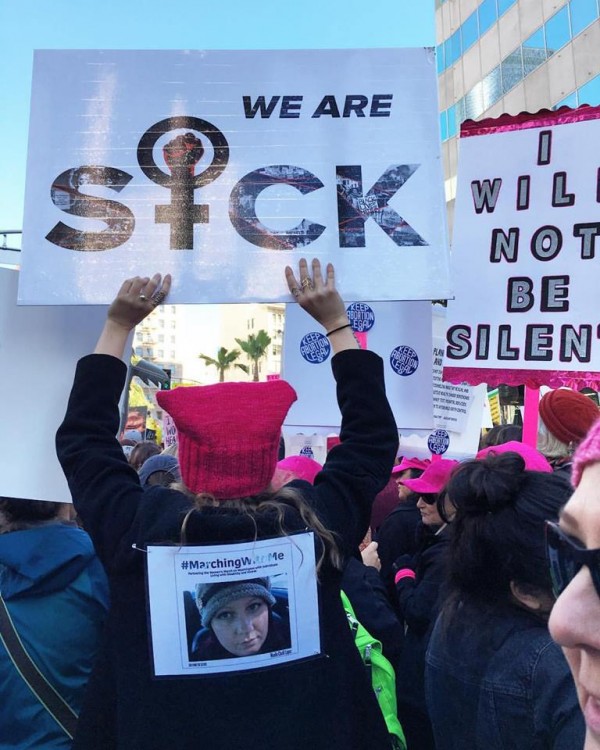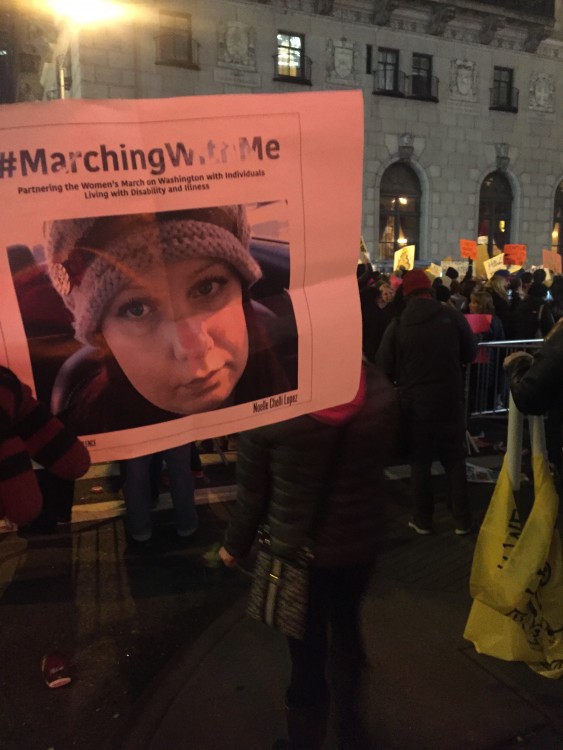How I Participated in the Women's March When I Couldn't Physically Attend
Last weekend I participated in the historic Women’s March that occurred throughout the world — but probably not in the way you imagine.
As excitement and enthusiasm for the march swept social media, the feeling of being excluded washed over me. While I watched women making plans to travel to Washington D.C. or attend a sister march closer to home, I couldn’t help but feel completely left out. Among the information being disseminated through various social media platforms, blogs, and meet-up sites, I was unable to find material about accessibility for women living with disabilities or illness wishing to attend.
As a woman living with reflex sympathetic dystrophy syndrome (RSD) I felt it was important that among the sea of worthy causes being championed, that chronic illness and disability be represented and made visible at the march. However, my current health challenges prevented me from attending physically. How could I participate and feel like I’m contributing in some way?
After scouring the internet, I was left feeling dejected. I was unable to find an organized effort to highlight the disabled community and those of us living with serious chronic illness.
It wasn’t until just days before the Women’s March was set to commence that I was connected to a group called Suffering the Silence through a fellow spoonie friend. I was elated when I saw their #MarchingWithUs effort to connect women unable to attend physically to a march due to illness or disability, with women who would represent them by pinning their photo banner to their coats!

With just days to spare, I signed up and was paired with two women; Siobhan who resides in Los Angeles and would be attending her city’s respective march, and Brenna from Chicago, with plans to travel to Washington D.C.
I connected with both women via email and social media before the march. Brenna is a writer and performer from Chicago who initially had plans to travel to New York to meet up with her friends and then make the trek to D.C. When their bus, which was set to transport many women down to D.C. for the march, didn’t show, they made the decision to attend a sister march in New York City.
Through my chats with Siobhan, I learned she was a 27-year-old artist and cancer survivor. Diagnosed in 2014 with brain cancer, the last several years had been filled with surgeries, radiation, and chemo. She has been out of treatment for nearly a year now, and shared how privileged she felt that her illness allowed her to march on behalf of all women who are sick. With my banner pinned to her back, she carried the sign she designed proclaiming “WE ARE SICK” and helped elevate the visibility of our community which grossly lacks representation.

I was truly honored to be represented by both these women. With the help of my fellow sisters, I was able to contribute in a small way to raising awareness for a group I identify with, which is often forgotten and marginalized.

I’ve kept in contact with Siobhan since the march, and she’s shared how disappointed she was that in a crowd estimated to be nearly 750,000 people, and over seven hours she did not see another #MarchingWithMe participant or representation for sick or disabled women.
We have to do better.
People living with chronic illness and disability are members of all communities, regardless of race, gender, religion, or political affiliation. We are here, and we deserve to be heard and represented. It’s critical that those committed to social justice give voice to our community, and help make visible those who are often made to feel invisible.
We want to hear your story. Become a Mighty contributor here.
